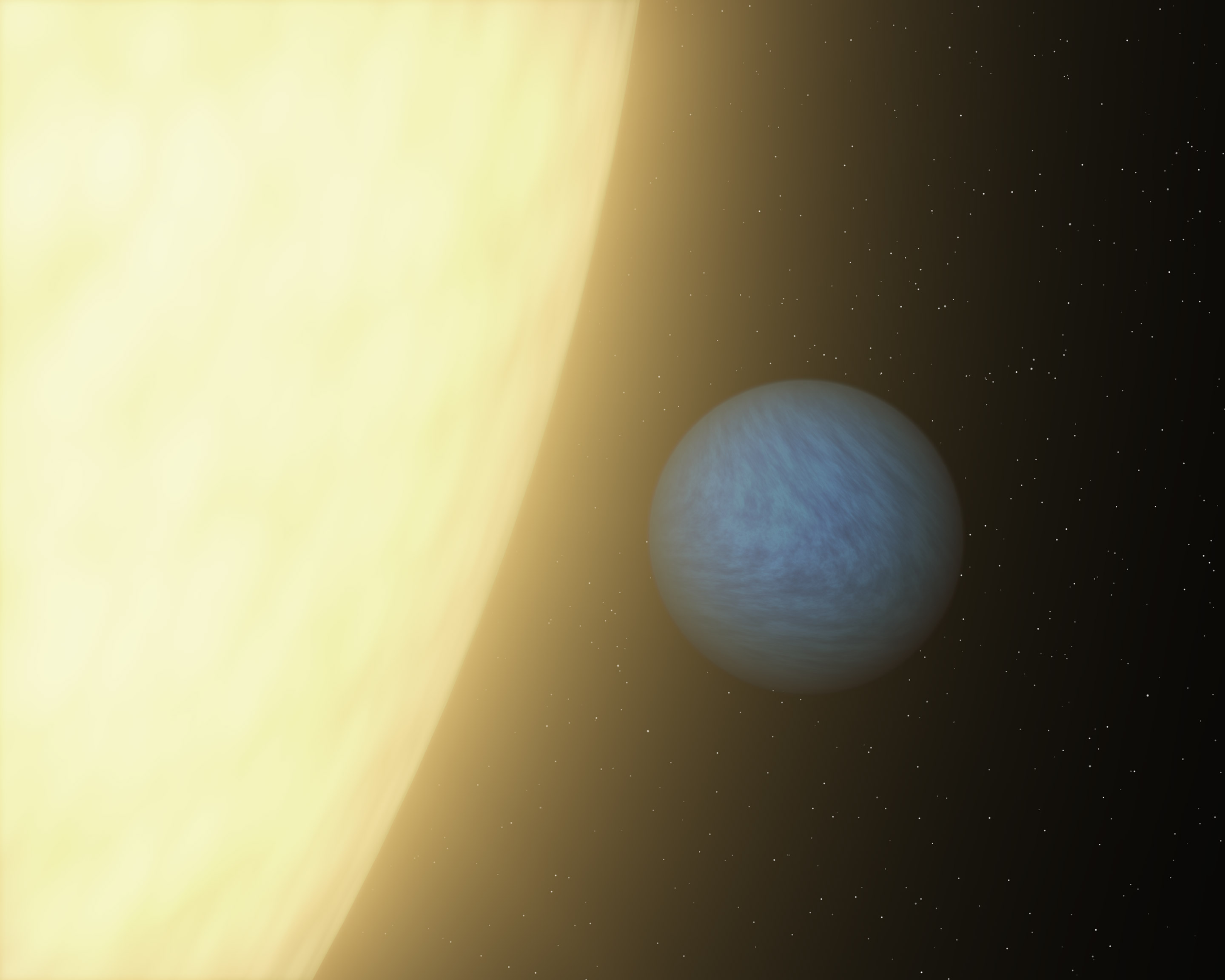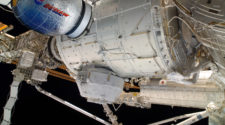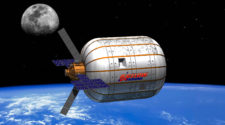
Passing its 10th anniversary, NASA’s Spitzer Space Telescope has evolved into a premier observatory for an endeavor not envisioned in its original design: the study of worlds around other stars, called exoplanets.
While the engineers and scientists who built Spitzer did not have this goal in mind, their visionary work made this unexpected capability possible. Thanks to the extraordinary stability of its design and a series of subsequent engineering reworks, the space telescope now has observational powers far beyond its original limits and expectations.
“When Spitzer launched back in 2003, the idea that we would use it to study exoplanets was so crazy that no one considered it,” said Sean Carey of NASA’s Spitzer Science Center at the California Institute of Technology in Pasadena. “But now the exoplanet science work has become a cornerstone of what we do with the telescope.”
Spitzer views the universe in the infrared light that is a bit less energetic than the light our eyes can see. Infrared light can easily pass through stray cosmic gas and dust, allowing researchers to peer into dusty stellar nurseries, the centers of galaxies, and newly forming planetary systems.
This infrared vision of Spitzer’s also translates into exoplanet snooping. When an exoplanet crosses or “transits” in front of its star, it blocks out a tiny fraction of the starlight. These mini-eclipses as glimpsed by Spitzer reveal the size of an alien world.
Exoplanets emit infrared light as well, which Spitzer can capture to learn about their atmospheric compositions. As an exoplanet orbits its sun, showing different regions of its surface to Spitzer’s cameras, changes in overall infrared brightness can speak to the planet’s climate. A decrease in brightness as the exoplanet then goes behind its star can also provide a measurement of the world’s temperature.

While the study of the formation of stars and the dusty environments from which planets form had always been a cornerstone of Spitzer’s science program, its exoplanet work only became possible by reaching an unprecedented level of sensitivity, beyond its original design specifications.
Researchers had actually finalized the telescope’s design in 1996 before any transiting exoplanets had even been discovered. The high degree of precision in measuring brightness changes needed for observing transiting exoplanets was not considered feasible in infrared because no previous infrared instrument had offered anything close to what was needed.
Nevertheless, Spitzer was built to have excellent control over unwanted temperature variations and a better star-targeting pointing system than thought necessary to perform its duties. Both of these foresighted design elements have since paid dividends in obtaining the extreme precision required for studying transiting exoplanets.
The fact that Spitzer can still do any science work at all still can be credited to some early-in-the-game, innovative thinking. Spitzer was initially loaded with enough coolant to keep its three temperature-sensitive science instruments running for at least two-and-a-half years. This “cryo” mission ended up lasting more than five-and-a-half-years before exhausting the coolant.
But Spitzer’s engineers had a built-in backup plan. A passive cooling system has kept one set of infrared cameras humming along at a super-low operational temperature of minus 407 degrees Fahrenheit (minus 244 Celsius, or 29 degrees above absolute zero). The infrared cameras have continued operating at full sensitivity, letting Spitzer persevere in a “warm” extended mission, so to speak, though still extremely cold by Earthly standards.

To stay so cool, Spitzer is painted black on the side that faces away from the sun, which enables the telescope to radiate away a maximum amount of heat. On the sun-facing side, Spitzer has a shiny coating that reflects as much of the heat from the sun and solar panels as possible. It is the first infrared telescope to use this innovative design and has set the standard for subsequent missions.
Fully transitioning Spitzer into an exoplanet spy required some clever modifications in-flight as well, long after it flew beyond the reach of human hands into an Earth-trailing orbit. Despite the telescope’s excellent stability, a small “wobbling” remained as it pointed at target stars. The cameras also exhibited small brightness fluctuations when a star moved slightly across an individual pixel of the camera. The wobble, coupled with the small variation in the cameras, produced a periodic brightening and dimming of light from a star, making the delicate task of measuring exoplanet transits that much more difficult.
To tackle these issues, engineers first began looking into a source for the wobble. They noticed that the telescope’s trembling followed an hourly cycle. This cycle, it turned out, coincided with that of a heater, which kicks on periodically to keep a battery aboard Spitzer at a certain temperature. The heater caused a strut between the star trackers and telescope to flex a bit, making the position of the telescope wobble compared to the stars being tracked.
Ultimately, in October 2010, the engineers figured out that the heater did not need to be cycled through its full hour and temperature range – 30 minutes and about 50 percent of the heat would do. This tweak served to cut the telescope’s wobble in half.
Spitzer’s engineers and scientists were still not satisfied, however. In September 2011, they succeeded in repurposing Spitzer’s Pointing Control Reference Sensor “Peak-Up” camera. This camera was used during the original cryo mission to put gathered infrared light precisely into a spectrometer and to perform routine calibrations of the telescope’s star-trackers, which help point the observatory.

The telescope naturally wobbles back and forth a bit as it stares at a particular target star or object. Given this unavoidable jitter, being able to control where light goes within the infrared camera is critical for obtaining precise measurements. The engineers applied the Peak-Up to the infrared camera observations, thus allowing astronomers to place stars precisely on the center of a camera pixel.
Since repurposing the Peak-Up Camera, astronomers have taken this process even further, by carefully “mapping” the quirks of a single pixel within the camera. They have essentially found a “sweet spot” that returns the most stable observations. About 90 percent of Spitzer’s exoplanet observations are finely targeted to a sub-pixel level, down to a quarter of a pixel.
“We can use the Peak-Up camera to position ourselves very precisely on the camera and put light right on the best part of a pixel,” said Carey. “So you put the light on the sweet spot and just let Spitzer stare.”
These three accomplishments – the modified heater cycling, repurposed Peak-Up camera and the in-depth characterization of individual pixels in the camera – have more than doubled Spitzer’s stability and targeting, giving the telescope exquisite sensitivity when it comes to taking exoplanet measurements.
“Because of these engineering modifications, Spitzer has been transformed into an exoplanet-studying telescope,” said Carey. “We expect plenty of great exoplanetary science to come from Spitzer in the future.”



